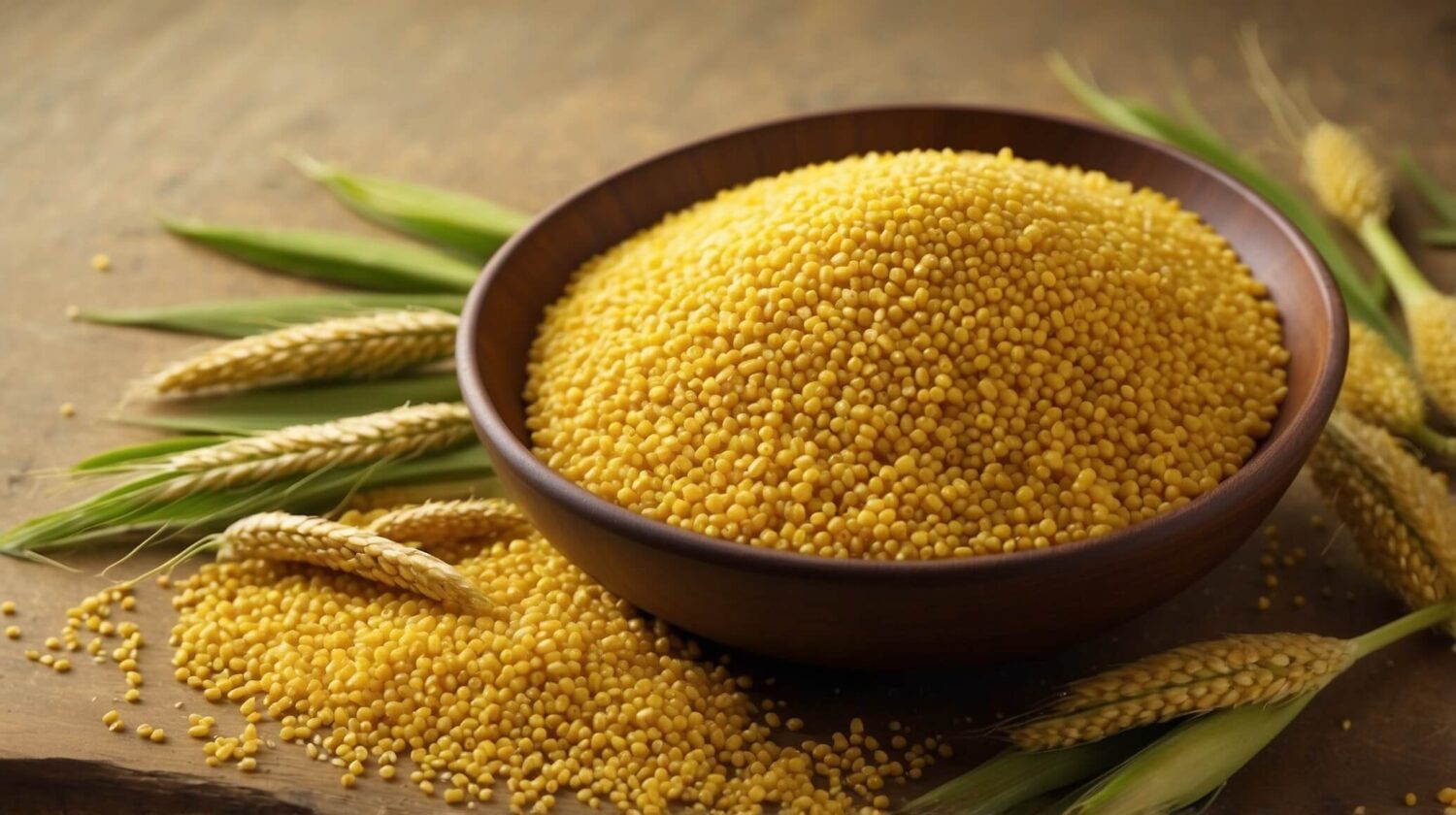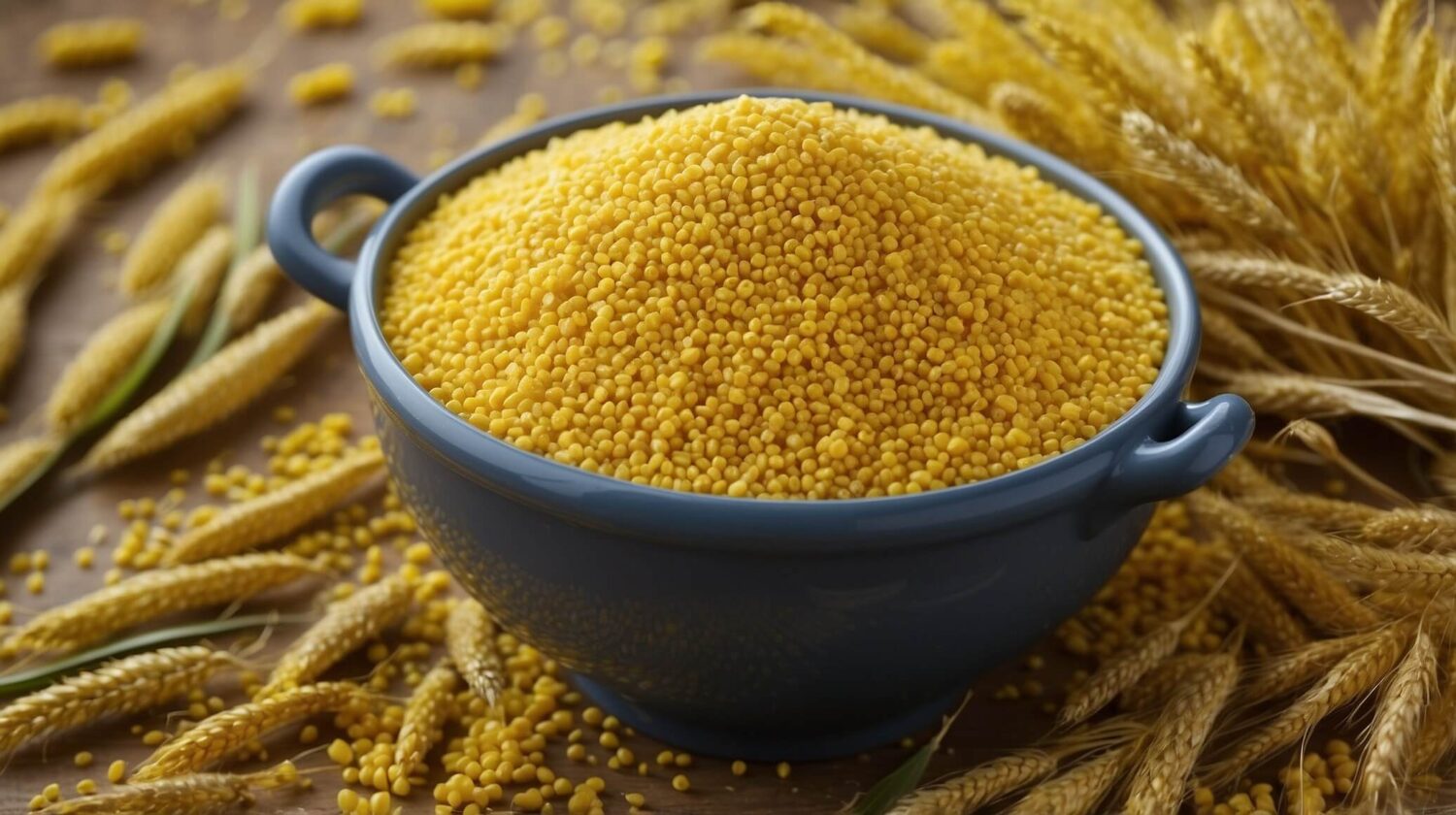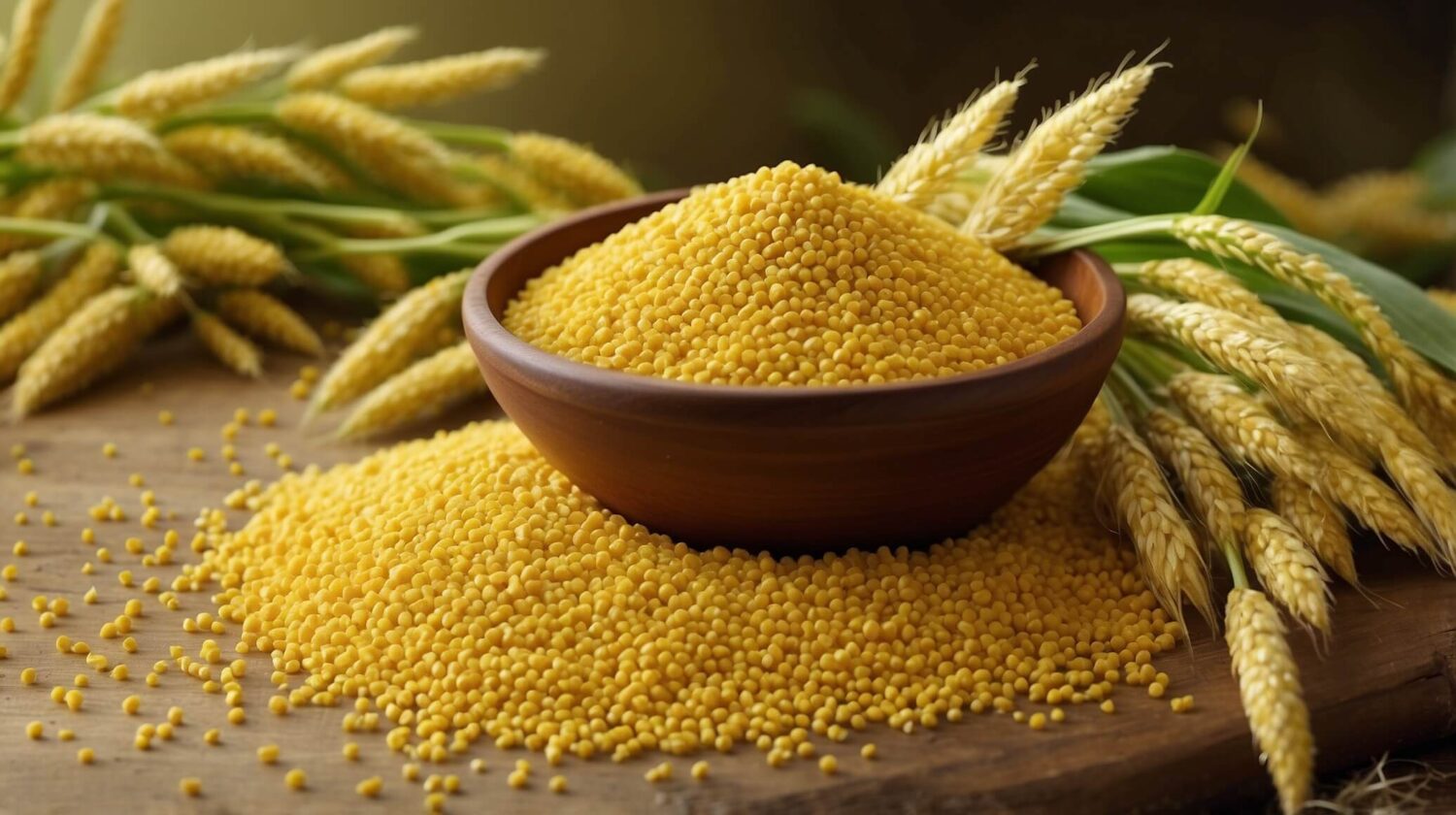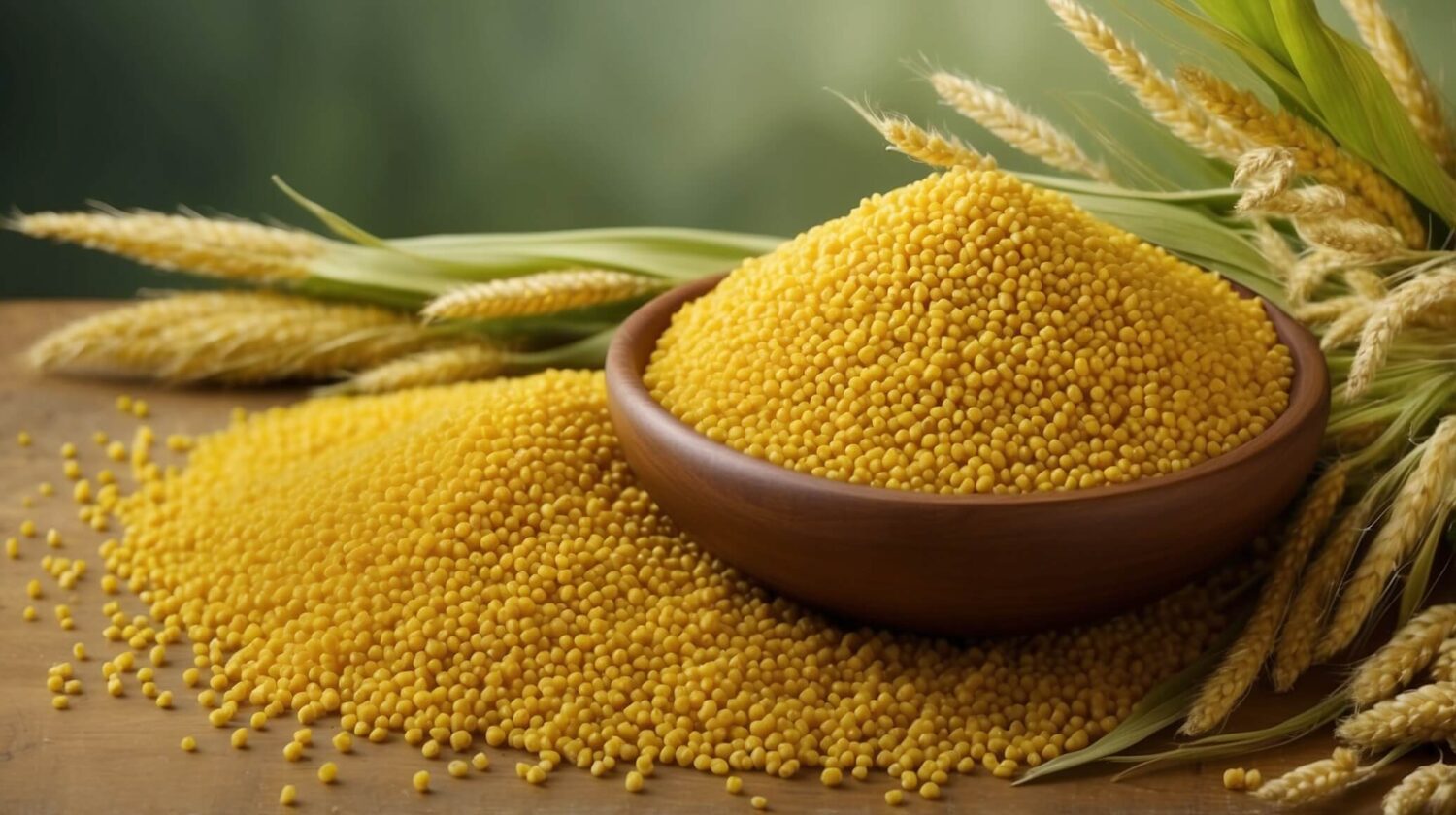Millet, often overlooked in the culinary world, packs a nutritional punch that many grains just can’t compete with. So, why millet is good for you? What is benefits of millets. This humble grain has been a staple in diets around the globe for centuries, and it’s high time we revisit its many benefits. In this article, let’s explore the reasons why millet should be the star of your pantry.
What is Millet?
Before we dive into the benefits and nutrition of millet, let’s first talk about what it is. Millet is a group of small-seeded grasses, and it’s one of the oldest cultivated grains in history. It’s primarily grown in arid and semi-arid regions. As I look back, I remember the first time I tried millet; I was at an international potluck. One of my friends from India prepared a delicious millet upma. I remember how pleasantly surprised I was by its unique texture and nutty flavor.
Millet comes in various types, including pearl, foxtail, proso, and finger millet. Depending on the type, it can vary in color and texture, but they all have one thing in common—amazing health benefits.
Nutritional Profile of Millet
So, why exactly is millet good for you? One of the best things about millet is its impressive nutritional profile. Here are some key nutrients found in millet:
1. **High in Protein**: Millet contains about 11-13% protein, making it a fantastic option for vegetarians and vegans.
2. **Rich in Fiber**: With around 8.5 grams of dietary fiber per cooked cup, millet promotes digestive health.
3. **Packed with Minerals**: It contains essential minerals like magnesium, phosphorus, manganese, and iron. For instance, manganese is important for bone health and metabolism.
4. **Gluten-Free**: Unlike wheat or barley, millet is completely gluten-free. This makes it suitable for people with celiac disease or gluten intolerance.

5. **Antioxidants**: Some studies suggest that millet contains various antioxidants that can help protect your body from oxidative stress.
Given its nutrient density, it’s no wonder that millet is gaining popularity among health-conscious folks. I’ve noticed my own energy levels spike after incorporating it into my meals!
Multiple Health Benefits
1. Digestive Health
One of the standout millet benefits is its ability to support digestion. The high fiber content helps regulate bowel movements and promotes gut health. For instance, after replacing my usual rice with millet for a few days, I noticed a big difference in how I felt—less bloating and more regularity!
2. Heart Health
Millet is known to contribute to heart health. The magnesium in millet helps relax blood vessels, lowering blood pressure. A study from the Journal of Nutrition published in 2020 found that whole grains, including millet, can reduce the risk of heart diseases significantly.

3. Weight Management
For anyone trying to manage their weight, millet can be a great ally. It’s low in calories but high in fiber, making you feel full longer. This can reduce the chances of unhealthy snacks between meals. Personally, I’ve swapped out my usual pasta for millet in some meals, and the difference in satiety is undeniable.
4. Blood Sugar Control
Many people are affected by diabetes, and millet can be beneficial for them too. Its low glycemic index means that it won’t spike your blood sugar levels. A 2018 study indicated that whole grains like millet can improve insulin sensitivity, which is essential for those managing diabetes.
5. Bone Health
As mentioned earlier, millet is high in important minerals. Calcium and magnesium are vital for bone health, and a good intake of millet can contribute to finally achieving those strong bones we all desire!
How to Incorporate Millet into Your Diet
So, if you’re sold on why millet is good for you, you might be wondering how to start incorporating it into your meals. Here are some easy, delicious ways to do so:
Breakfast Millet Porridge

Start your day with a hearty breakfast! Cook millet with almond milk and add some fruits and nuts. It’s a fantastic alternative to oatmeal.
As a Side Dish
You can serve millet as a side dish in place of rice or quinoa. Simply cook it and toss in your favorite roasted veggies and herbs. It’s super versatile!
Millet Salads
Millet holds up wonderfully in salads. Cook some millet and let it cool, then mix it with fresh veggies, lemon juice, and a drizzle of olive oil.
Baking with Millet
You can even use millet flour in your baking. I’ve tried replacing half of the wheat flour in my pancake or muffin recipes with millet flour, and it turned out amazing!
Considerations
While the health benefits are plenty, there are a couple of considerations to keep in mind. For instance, millet contains compounds called goitrogens, which can interfere with thyroid function in very high amounts. However, most people can enjoy millet without any risk of thyroid disruption. Cooking it can also reduce these compounds significantly.
Furthermore, millet may not be everyone’s cup of tea, especially for those with certain allergies. If you’re introducing it to your diet for the first time, I’d recommend starting small.
Recent Trends
It’s interesting to see the resurgence of millet in recent years. With the rise of health-conscious eating and an increased focus on whole grains, millet has made its way back into our diets. Organic shops now offer a variety of millet products, from flour to snacks. Statista reported that in the US, the millet market is expected to grow significantly, reflecting its rising popularity as people discover why millet is good for you.
Conclusion
So, in conclusion, why millet is good for you? With its impressive nutritional profile, numerous health benefits, and versatility in meals, it truly deserves a place in our kitchens. Whether you’re looking to improve your heart health, manage your weight, or simply try something new in your diet, millet has a lot to offer.
As I wrap up this article, I encourage you to give millet a shot! Start small, perhaps with a breakfast porridge or a side dish. You may just find a new favorite grain that you can rely on for delicious meals and excellent health benefits. Cheers to health, happiness, and great food choices!
—
For further reading, check out this Medline article on millet’s nutritional benefits.
Let’s keep the conversation going! How do you like to incorporate millet into your meals? I’d love to hear your thoughts and experiences in the comments.
